1
What do I need to know how to do?
What Tools do I need?
First, verify that your components are tubeless compatible. See Tubeless Tire Compatibility for more information on tubeless tire standards.
3
There are two main methods for adding sealant to the tire:
This method requires a measuring cup. An air compressor is highly recommended.
This method requires a valve with a removable valve core, a syringe, and an air compressor.
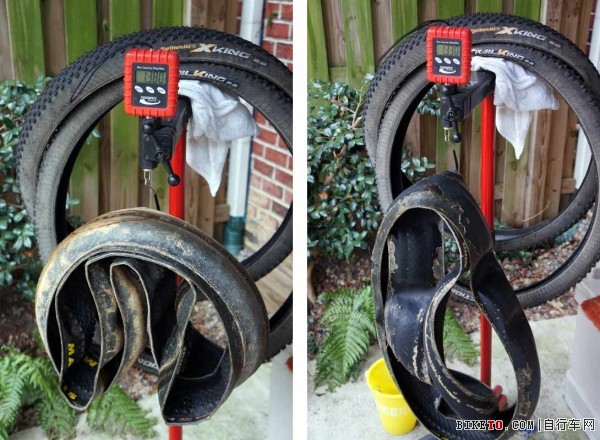
Sealant seeping through the tire bead
The rim strip on this wheel was not adequately sealed. Sealant may, in time, create a seal
4
In general, punctures in tubeless tires cannot be repaired. Punctures in UST tubeless tires, and other tubeless tires with a butyl inner lining, can potentially be repaired using a vulcanizing patch kit such as the VP-1. It is not recommended that you attempt to use other types of patches, or attempt to repair other types of tubeless tires.
It is not recommended that you attempt to use other types of patches, or attempt to repair other types of tubeless tires.
See Inner Tube Repair for instructions on using a vulcanizing patch kit.
Heading out the door? Read this article on the new Outside+ app available now on iOS devices for members! Download the app.
You’re railing that descent, nailing every line and feeling like a world champ, when suddenly you smash a wheel into a big square-edge rock. Quite literally, you can feel the air go out of the ride. Not much kills the stoke from a great spin quicker than a flat tire. This is why tubeless tires are increasingly popular for all kinds of cycling. These setups use a liquid sealant instead of an inner tube to hold air. As a result, they offer better protection against all kinds of flats and enable you to run lower pressures than tube-type systems, increasing traction and creating a more comfortable ride. In the event you do get a puncture, tubeless tires are also more likely to stay attached to the rim, which is safer.
But ask most riders about going tubeless and you’ll encounter a litany of horror stories about setup. Why are some tubeless installs easy and others a multi-hour thrash session punctuated by merchant-marine levels of cursing? In short: manufacturing standards and tolerances. Wheels and tires from different brands vary ever so slightly in actual size, so a tire that fits great on one wheel is an overly tight nightmare on another. The good news is that this is slowly improving. Because manufacturing standards are getting better, with stricter tolerances, it’s now much more likely than even five years ago that you’ll be able to install and seat tubeless tires on the first try with a standard floor pump. Here’s a step-by-step guide.
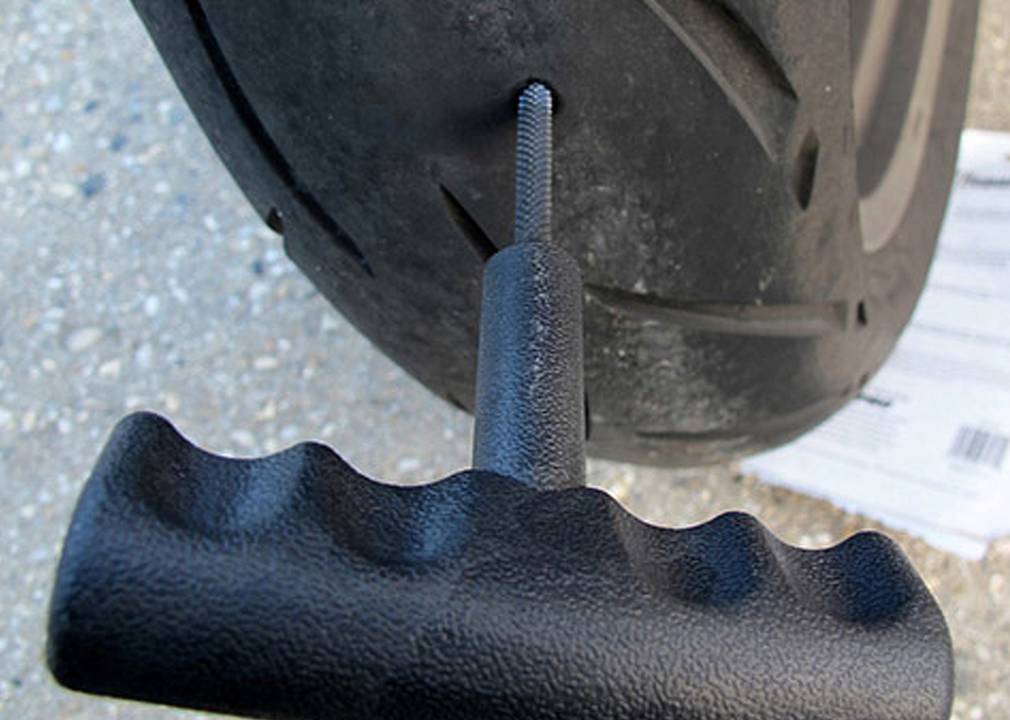 It’s not that expensive, and it’s far better suited to the task.
It’s not that expensive, and it’s far better suited to the task.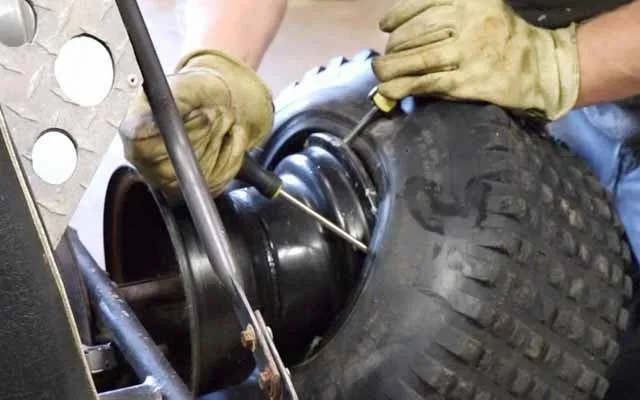 For tires, this means that the bead has a tubeless-ready profile, and that the tire casing can be made airtight by adding sealant. For rims, it means that the rim bed is sealed against air loss (either by being solid material or through the addition of airtight rim tape), and that the bead lock has a tubeless-ready cross section.
For tires, this means that the bead has a tubeless-ready profile, and that the tire casing can be made airtight by adding sealant. For rims, it means that the rim bed is sealed against air loss (either by being solid material or through the addition of airtight rim tape), and that the bead lock has a tubeless-ready cross section.You’ll need tubeless-compatible or tubeless-ready wheels to start. This is governed by the rim profile itself (see the glossary, above). Most gravel and mountain-bike wheels these days are compatible; road bikes are not always so. But in any case, check manufacturer specs.
A warning: Do not under any circumstances try to make a wheel that is not listed as tubeless compatible into a tubeless system. If you’re lucky, all that will happen is the tire will blow off the rim in your garage and spray sealant everywhere. If you’re not lucky, the tire will hold just long enough for you to go on a ride, and then it will blow off, likely causing a crash. The same goes for tires: the bead on non-tubeless-ready tires will not hold securely in the bead lock and can blow off without warning.
Many higher-end wheelsets are tubeless ready right out of the box. For others listed as tubeless compatible, you’ll need to seal the rim bed (namely the spoke holes) with airtight tape. Good brands are Silca, Stan’s NoTubes, and WTB. You’ll need to match the tape width to your rim width.
This special elixir typically features very small solid particles of rubber or latex in a liquid suspension.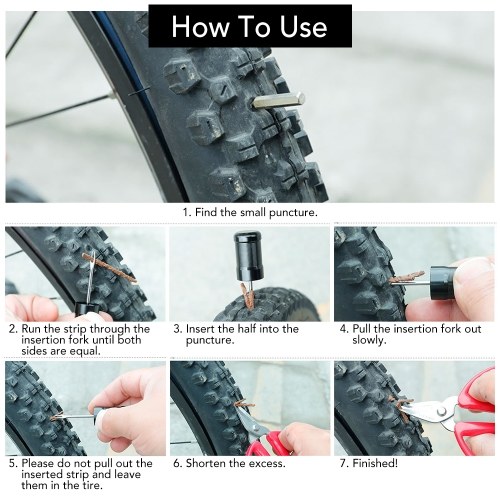 When you’re riding, the particles slosh around the inside of the tire, where they find and plug small leaks. Good bets are Muc-Off, Orange Seal, and Stan’s. Buy an 8-to-16-ounce bottle. Sealant doesn’t dry out in the bottle over time like it does in tires, and you may want some extra in case the initial installation doesn’t go smoothly. Some bottles of sealant come with a measuring cup; if yours doesn’t, you’ll need a cup that has measurement markings in ounces.
When you’re riding, the particles slosh around the inside of the tire, where they find and plug small leaks. Good bets are Muc-Off, Orange Seal, and Stan’s. Buy an 8-to-16-ounce bottle. Sealant doesn’t dry out in the bottle over time like it does in tires, and you may want some extra in case the initial installation doesn’t go smoothly. Some bottles of sealant come with a measuring cup; if yours doesn’t, you’ll need a cup that has measurement markings in ounces.
Tubeless tires use special valve stems that create an airtight seal on the inside of the rim bed to prevent air loss. The rubber grommet that forms the seal sometimes has to be matched to the profile of your wheel’s rim bed (so-called universal valves claim to work with almost any system). The best valves have removable cores. Industry Nine, Muc-Off, and Stan’s make good universal valves with removable cores.
The sealant’s job is to plug holes, but it won’t seal a non-tubeless tire. More important: non-tubeless tires don’t have the specially shaped bead to lock to the rim. We’ll steer clear of recommendations here. Tires are personal and, for gravel and mountain-bike riding especially, the best choices are highly geography- and conditions-specific. Ask around for what others in your area use and trust.
More important: non-tubeless tires don’t have the specially shaped bead to lock to the rim. We’ll steer clear of recommendations here. Tires are personal and, for gravel and mountain-bike riding especially, the best choices are highly geography- and conditions-specific. Ask around for what others in your area use and trust.
You’ll need a floor pump, sturdy plastic tire levers, a valve-core remover (a very small and inexpensive wrench), a clean rag, a small paintbrush, some rubbing alcohol, and an old cup for soapy water.
These are big syringe-like devices that install the sealant directly through the valve stem. They’re fairly affordable ($10 to $30) and long-lasting. They’re also easy to use and much less likely to spill than the simple plastic measuring cup that comes with most bottles of sealant. Some have a needlelike attachment that can also be used to pull sealant back out of tires—useful if you’re swapping tires or want to store a bike for winter without letting the sealant congeal.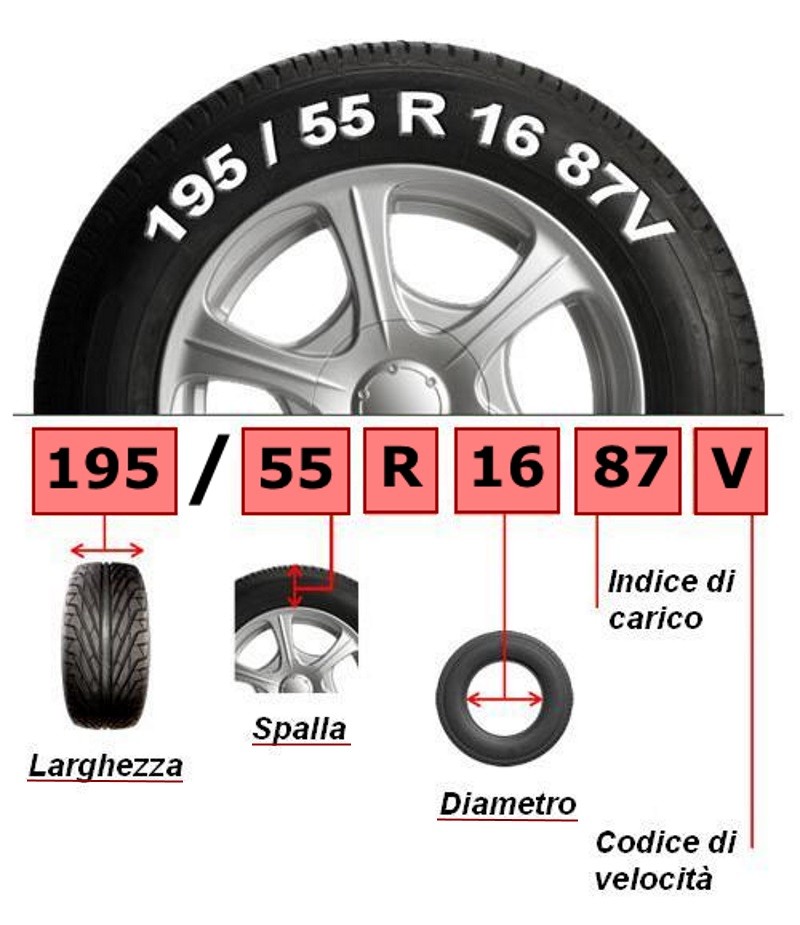 Stan’s makes a basic system, but I prefer the KOM or Mil-Kit versions (note: Mil-Kit’s system is more expensive but comes with universal valve stems).
Stan’s makes a basic system, but I prefer the KOM or Mil-Kit versions (note: Mil-Kit’s system is more expensive but comes with universal valve stems).
These are basically reusable air chambers that you pressurize with a floor pump, then place over the valve stem and use to inflate the tire quickly. They’re helpful because seating tubeless tire beads to the rim often requires a high volume of air delivered fast, and floor pumps can struggle to do that. Brands include Airshot, Mil-Kit, and Specialized. But these items are designed for one task only, which may not justify the price ($50 to $100) if you use them rarely. If you’re only installing tubeless tires on rare occasions, you can also use a conventional CO2 inflator system to seat beads. Many people use standard air compressors of the sort you need for home-improvement projects.
 (Joe Lindsey)
(Joe Lindsey)Tools: Rag, rubbing alcohol
Whether you’re working with new wheels or ones you’re converting, make sure they’re clean. Dip a rag in rubbing alcohol, and thoroughly wipe down the rim bed, rim tape, and internal sidewalls. Pay special attention to removing any debris from the bead hook, where the tire will seat. Check to ensure that the tape is even and tight, with no wrinkles or gaps that could leak air. Wipe dry.
Tools: Tire lever, floor pump, tube
That’s right: use a tube first. Why? It’s an easy way to get at least one of the tire beads firmly seated to the bead lock and to work out the kinks in a tire bead after it’s sat folded in storage.
Unfold the new tire, and seat one side in the rim bed. Many tires, especially mountain-bike tires, are directional or even front- or rear-specific; check to make sure it’s in the proper orientation before installing. Tip: line up the center of the tire logo over the valve stem, as this can make it easier to find and fix leaks on rides.
Tip: line up the center of the tire logo over the valve stem, as this can make it easier to find and fix leaks on rides.
Inflate an inner tube just enough that it holds shape. Insert the valve in the rim’s valve hole, and tuck the tube into the tire. Finally, deflate the tube a bit, and install the other side of the tire. The bead will likely be tight in the last quarter or so. Use a tire lever, and carefully lift the bead into the rim well, taking care not to pinch the tube between the tire and rim. Once seated, push the tire bead toward the center of the rim bed, and visually check to make sure the tube isn’t pinched.
Inflate the tire, stopping at about 20 psi to make sure that the tire bead isn’t bulging out over the rim in any location. Resume pumping to a few psi short of the maximum inflation listed on the tire sidewall. You’ll hear some snaps and pops. This is normal; it’s the tire bead seating in the rim lock. Finally, set the wheel in a warm, sunny location for 15 to 20 minutes.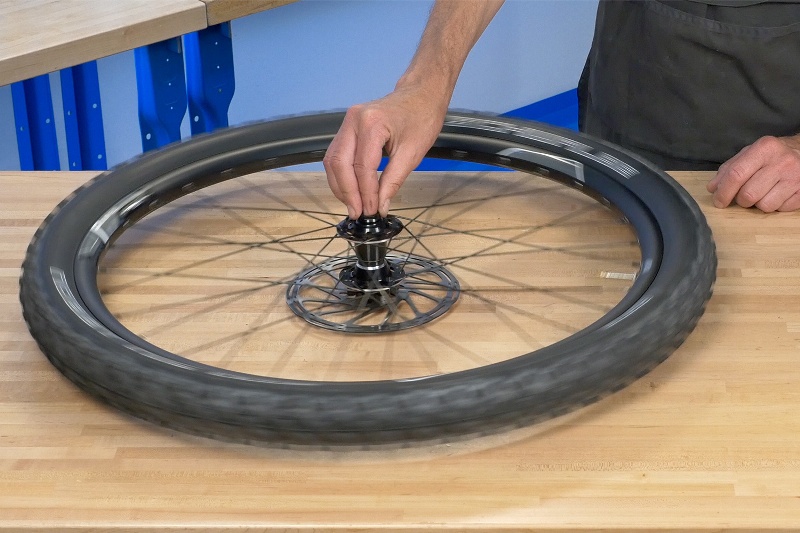 The heat softens the kinks in the tire bead, and—if you’re setting up wheels for tubeless for the first time—helps ensure that the rim tape’s adhesive is fully bonded to the rim and won’t leak.
The heat softens the kinks in the tire bead, and—if you’re setting up wheels for tubeless for the first time—helps ensure that the rim tape’s adhesive is fully bonded to the rim and won’t leak.
Tools: Tire lever
Take the wheel out of the sun, and let it cool back to room temperature. Deflate the tire. Carefully push only one side of the tire into the rim bed, then use the tire lever to lift that bead off the rim. Remove the tube, leaving the other tire bead seated in the rim.
Install the tubeless valve by threading the knurled nut as tightly as it’ll go with your fingers. Don’t use a wrench or pliers; overtightening could crack the rubber gasket on the valve stem and cause a leak. Make sure the valve you’re using fits the rim-bed profile (see “What to Buy,” above). A poor fit could leak.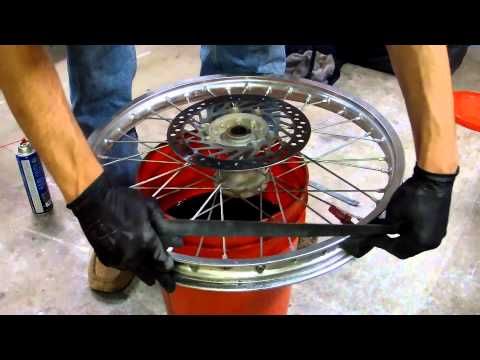
Tools: Tire lever, tire sealant, measuring cup or injector, valve-core remover
If you’re using a sealant-injector system: Reinstall the loose tire bead, taking care not to dislodge the bead on the other side of the tire. Use the valve-core remover to unthread the core counterclockwise, then remove it and set it aside. Shake the sealant bottle for 10 to 20 seconds to thoroughly mix its contents, then measure out the appropriate amount for your tire size into the injector chamber:
Two ounces for road tires (up to about 28 millimeters)
Three ounces for 700c gravel or 27.5 mountain tires
Three to four ounces for most 29er mountain tires
Five to six ounces for plus-size mountain-bike tires
Seat the injector securely on the valve stem (or push the needle fitting through the valve stem), and then carefully inject the sealant into the tire.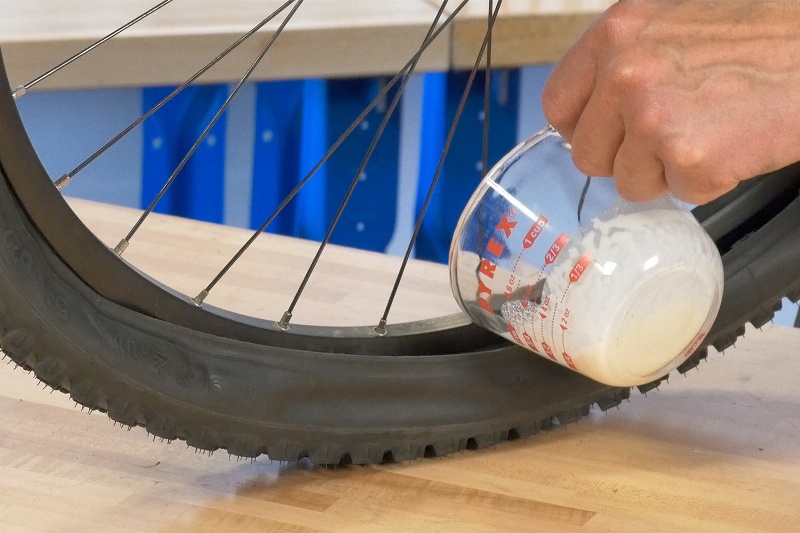 Reinstall the valve core.
Reinstall the valve core.
If you’re just using a sealant cup: Don’t worry about removing the valve core, since you’re not using it to add sealant. Reinstall the loose tire bead, but leave a final section unmounted. Prop up the wheel with this section closest to the ground but the opening tilted upward to prevent spillage. Shake the sealant bottle for 10 to 20 seconds to thoroughly mix its contents, then pour the appropriate amount into the cup, and carefully pour that directly into the tire at the unmounted section. Grab the wheel and gently rotate the unmounted section up to 12 o’clock, so that the sealant flows into a fully mounted section of the tire where it’s less likely to leak out, and wrestle the final section of tire bead onto the rim (you may need the tire lever).
Tools: Floor pump, soapy water, small paintbrush
Seating tubeless tires takes a lot of air rushing into the tire very fast to seat the tire bead into the rim lock. You might be able to do this with a floor pump, but you may need a higher-volume air source.
You might be able to do this with a floor pump, but you may need a higher-volume air source.
Take the paintbrush and dip it in the soapy water, then run it along the tire sidewall where the loose tire bead and rim bead lock meet. The soapy water helps the tire bead slip into place more easily.
If you’re using a floor pump: Because you’ve already seated one side of the bead, you may be able to inflate the tire with a floor pump. It takes some effort and maybe a little luck. First, thread the wheel skewer or axle through the hub—that provides something to grab as you spin the wheel to disperse sealant. Then firmly seat the pump chuck on the valve stem (making sure the stem core is fully open), and pump full strokes as fast as you can to get the installed but unseated tire bead into the rim’s bead lock. Again, you’ll hear those telltale snaps and pops. If you hear that, keep pumping! Pump to a few psi short of the maximum inflation listed on the tire sidewall.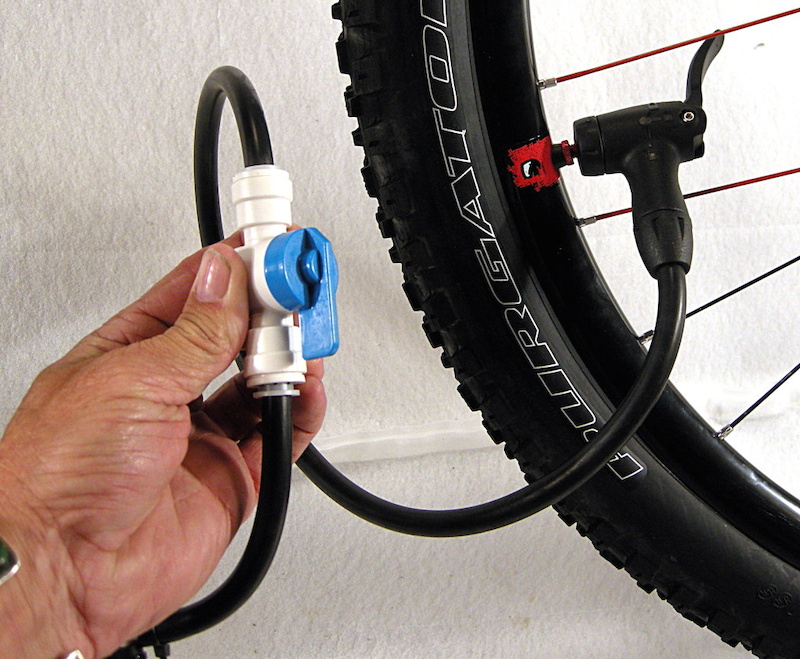 Quickly remove the pump chuck, grab the quick-release lever on the wheel skewer or axle, and spin the wheel for a minute or so, rotating the axis back and forth. This helps distribute the sealant evenly inside the tire. If you see sealant spraying out anywhere for more than a few seconds, stop; the tire’s not fully seated. Also: if you are pumping quickly for at least 30 seconds but the tire won’t hold any air, stop; the tire likely won’t seat with just a floor pump.
Quickly remove the pump chuck, grab the quick-release lever on the wheel skewer or axle, and spin the wheel for a minute or so, rotating the axis back and forth. This helps distribute the sealant evenly inside the tire. If you see sealant spraying out anywhere for more than a few seconds, stop; the tire’s not fully seated. Also: if you are pumping quickly for at least 30 seconds but the tire won’t hold any air, stop; the tire likely won’t seat with just a floor pump.
Secondary protocol: If you can’t get the tire bead to fully lock in the rim, you’ll need a higher volume of air delivered faster. This is where the CO2 cartridge inflator you normally use for trailside-flat repairs comes in or the special tubeless-inflation systems we mentioned above. Another option is a pump with integrated booster chambers, like the Bontrager TLR Flash Charger or the Topeak JoeBlow Booster, although these get mixed reviews.
In any case, the process is basically the same with a booster or combo pump: charge the booster chamber, securely fasten the inflator chuck around the valve stem, then release the air into the tire.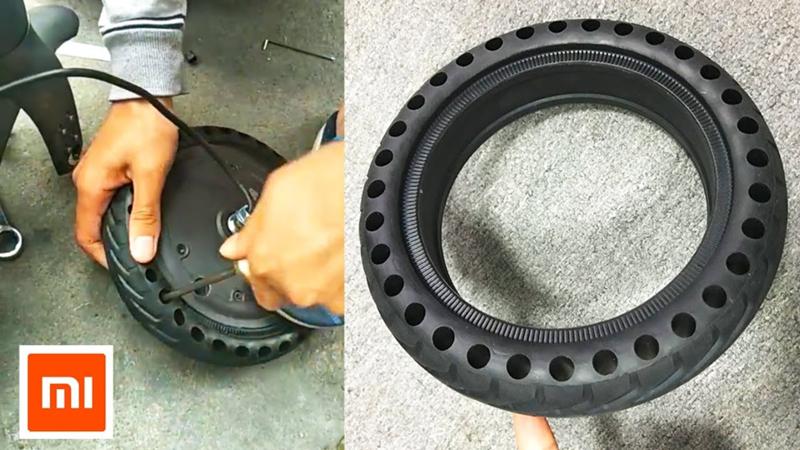 If you’re using a CO2 inflator, use the largest cartridge you can find for mountain tires (up to 20 grams). If the CO2 cartridge successfully seats the bead, it may still not be at the full pressure needed to ensure a complete seal to the system. Remove the inflator, and switch to the floor pump, topping off the pressure to a little less than the listed maximum sidewall pressure.
If you’re using a CO2 inflator, use the largest cartridge you can find for mountain tires (up to 20 grams). If the CO2 cartridge successfully seats the bead, it may still not be at the full pressure needed to ensure a complete seal to the system. Remove the inflator, and switch to the floor pump, topping off the pressure to a little less than the listed maximum sidewall pressure.
Something to consider: stand-alone tubeless boosters cost $50 or more. Booster and pump combos cost $120. Pancake-style air compressors start at $99, plus $30 or so for a Presta attachment.
Whichever method you use, once the tire seats, grab the wheel by the quick-release or through-axle lever, and spin it to disperse the sealant inside. Success? Awesome. Check for obvious sealant leaks at the sidewall and valve stem. If you don’t see any, install the wheel on the bike, and ride slowly around the neighborhood—this helps the sealant foam and plug any microscopic hole in the system. Leave the tire inflated at the higher pressure, which helps ensure that the tire stays sealed.
If this process didn’t work, the problem may not be something you can fix at home. In that case, we recommend going to a shop.
Mounting and dismantling of tires is now cleverly done in the tire shop. And, some 30 years ago, the drivers themselves were engaged in repairing the wheels. For the “experienced”, disassembling a tubeless wheel is not difficult. But what about those who have no repair experience, and in a traffic situation there is no other way out? Such drivers should study the theory of self-breakdown. The acquired knowledge can be put into practice.
Wheel stripping is the process of removing a tire from a rim. To disassemble the wheel, it may be necessary to replace the rubber with a new one, or in the case of an off-season “change of shoes”. And sometimes, you need to disassemble the wheel to repair a tire or disc. The most common are two methods of dismantling.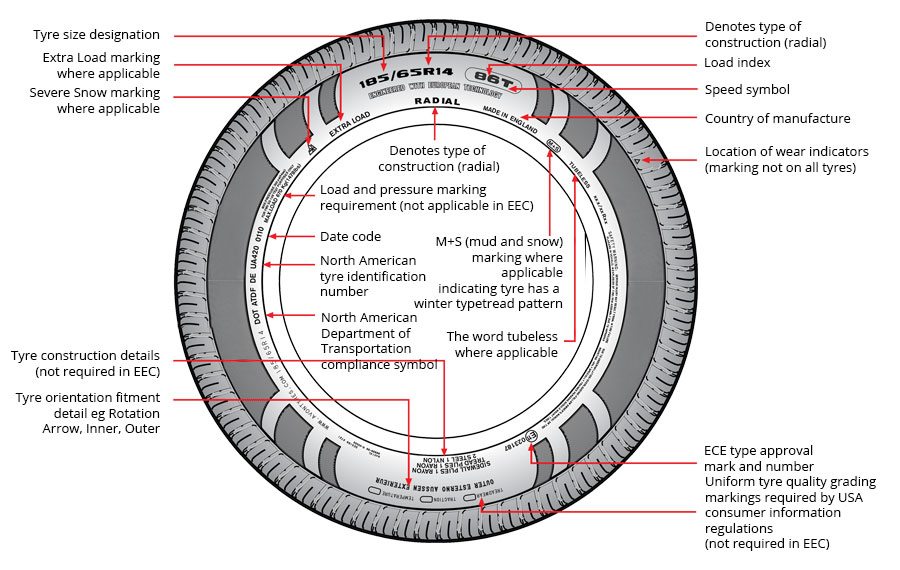
One of the oldest methods still used by truck drivers. During the operation of the wheels, the tire bead is "welded" to the seat on the disk. This phenomenon is especially common with tubeless tires. In this case, it is possible to separate two elements that have become attached to each other by hitting a wedge with a sledgehammer. A wedge is a piece of steel thick corner with machined ends so as not to tear the rubber. After a series of blows, the tire and disc are separated.
In this case, weights must be used. The method is more humane, since it harms the rubber and the disk less (it is not always possible to accurately hit the corner with a sledgehammer). For weight, it is possible to use the mass of the car or your own body. In the second case, in order to increase the pressure, you will have to use a lever structure (pipe or board).
Tires with tubes stick less often (except for truck wheels).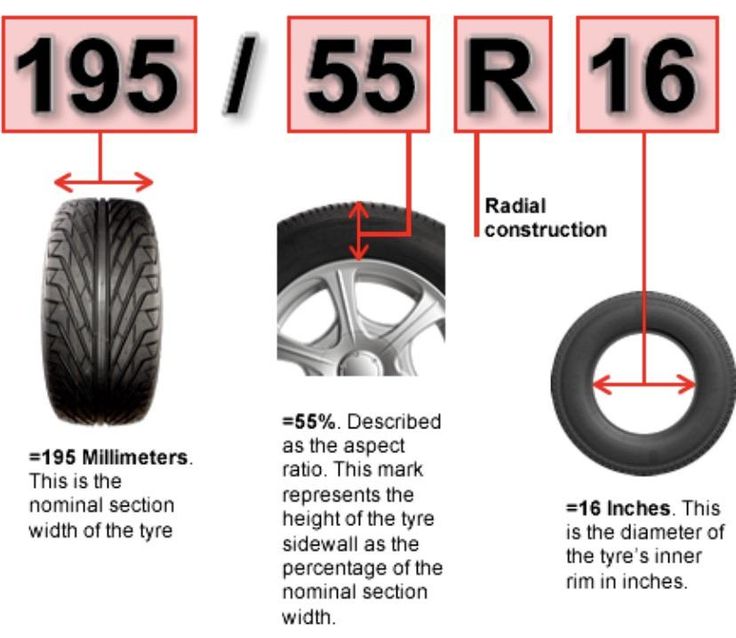 Therefore, it is enough to bleed the remaining air, clean the wheel of dirt and start dismantling. Tubeless tires stick a lot. Therefore, a few hours before disassembly, it is recommended to apply a decoking spray, for example, WD-40, to the stuck place. It is also possible to pour a little vinegar on the connection, as professional drivers used to do in the old days.
Therefore, it is enough to bleed the remaining air, clean the wheel of dirt and start dismantling. Tubeless tires stick a lot. Therefore, a few hours before disassembly, it is recommended to apply a decoking spray, for example, WD-40, to the stuck place. It is also possible to pour a little vinegar on the connection, as professional drivers used to do in the old days.
To disassemble the wheels at home, it is necessary to prepare the tools. First of all, these are mounting blades 2-3 pieces. For the shock method, you will need a sledgehammer and 1-2 corners. In the case of shockless technology using the weight of the car, you will need: a jack and pieces of boards. Consider the case on the road. The steps are as follows:
 We fix the position with the foot. With the second spatula we pry the tire bead and take out the edge of the rubber from the disk, and so on;
We fix the position with the foot. With the second spatula we pry the tire bead and take out the edge of the rubber from the disk, and so on; Before disassembly, it is recommended to inspect the mounts for chips and burrs. Sharp edges can damage the disc and tire. Never use crowbars or nail pullers. Their sharp edges are guaranteed to tear the tire bead.
Another option is how to disassemble a tubeless wheel yourself using a rack and pinion jack. We tie the edge of the lifting platform to the disk with a wire or cable, and rest its heel against the tire. We raise the disk. In the process of work, we gradually move the jack along the perimeter of the tire. However, this option is dangerous. If the connection breaks, the structure will shatter.
Assembling a tubeless wheel is easy. A few movements with the shoulder blades, and the tire is in place. But, how to pump up such a cylinder, because the tire bead does not have an airtight connection? This will require high air pressure, which will quickly expand the rubber. The compressor will supply the necessary pressure. But in the field there is no compressor. There is an exit.
A few movements with the shoulder blades, and the tire is in place. But, how to pump up such a cylinder, because the tire bead does not have an airtight connection? This will require high air pressure, which will quickly expand the rubber. The compressor will supply the necessary pressure. But in the field there is no compressor. There is an exit.
It is possible to apply two types of pumping. The first is the use of flammable liquids. Pour some gasoline inside the wheel, step back and set it on fire. Hot air will instantly expand the rubber. The second option is a radial tire tie. Wind the towing cable around the protector and twist it with a mount. The tire will expand. Its edges will press against the disk. After that, you can inflate the tire with a foot / hand pump and remove the bandage.
Before you try to disassemble the wheel with your own hands, you should take care of the tool. Keep a couple of mounting spatulas in stock, they can come in handy on the road. The rest: a jack, a pump and a tow rope should always be in the trunk. As can be seen from the material of the article, the disassembly operation can be carried out with an improvised tool.
As can be seen from the material of the article, the disassembly operation can be carried out with an improvised tool.
According to their internal structure, tires for special equipment can be divided into chamber and tubeless. As the name implies, in the first form, the air reservoir is the tire chamber inserted inside and then inflated (as in a bicycle), and in the second, the tire itself serves as this reservoir, as well as a disk having a special device.
Just like tubed to tubeless, you can replace pneumatic rubber with solid rubber on the fork. Find out more about the installation service itself and the solid-cast mounting rail
Over time, for many people who constantly encounter special tires, the question arises whether it is possible to interchange chamber and tubeless tires. This question is a consequence of the fact that the internal structure of tires of both one and the second type is very similar, but at the same time it is not the same.
Let's first consider the features of one and the other type of tires, after which it will be possible to easily answer the question of the possibility of interchanging these tires.
⇒ Choose tubeless tires by size on our website ⇐
A tubed tire has a slightly easier installation system than a tubeless one. Due to the fact that all the air that maintains the volume of the tire is contained in the chamber, and not inside the tire body, chambered tires use the simplest discs that do not have any special properties. Mounting such a tire is not difficult, just like repairing and dismantling. However, this is where the positive aspects of tube tires end, especially when compared with tubeless ones.
See also how you can replace pneumatics or casts here
Tubeless tires (TL) are a more modern option that are more complex in design and require more effort and technical ability to carry out maintenance. So, even one person can “pull” a tubed tire onto a disk, and even in the field, but in order to put on a tubeless tire, you need specialized equipment and certain skills. This is due to the fact that tubeless tires must sit very tightly on a specialized disk, as if bursting it from the inside. Organizing this with improvised means is almost impossible.
So, even one person can “pull” a tubed tire onto a disk, and even in the field, but in order to put on a tubeless tire, you need specialized equipment and certain skills. This is due to the fact that tubeless tires must sit very tightly on a specialized disk, as if bursting it from the inside. Organizing this with improvised means is almost impossible.
However, in terms of operation, in general, tubeless tires are preferred, since they are much better able to withstand the load, and it is quite simple to repair them on the spot. A puncture in a tubeless tire is much less of a problem than the same damage in a tubed tire. Everything is extremely simple here - tubeless tires “close” on the disk in such a way that air does not pass through it, so if a puncture occurs, the air will only exit through a small puncture hole. Moreover, a common experience is the simple screwing of a screw of the appropriate thickness into the place of damage. This screw serves as a kind of plug. In this state, you can easily get to the service point.
In this state, you can easily get to the service point.
In the event of such damage to the tube tire, it will be blown away almost instantly, since the air will escape along the entire plane of contact between the body and the disk.
A tube can only be inserted into a tubeless tire if it says “May be used with tube” (Russian “Can be used with a tube”), otherwise tubeless tires are not recommended for use with a tube, as this may lead to rapid wear of both the inner surface of the tire body and the tube itself.
Why not recommended? A tubeless tyre, which uses only an “inline” tube, is designed for high heat dissipation and minimal friction inside, and the presence of a tube will upset the balance that was laid down by the manufacturers. No wonder they called her tubeless, right?
Tube tires (TT) have a slightly lower cost. However, it cannot be said that the price of tubeless tires is too high, because the cost is due to a more complex manufacturing procedure.